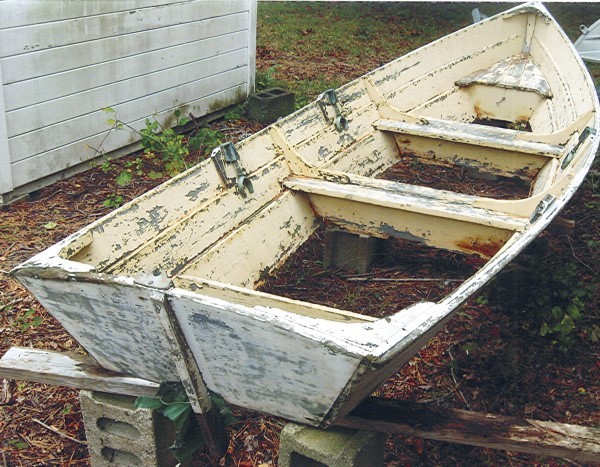The future sails toward us on the timbers of the past
Several summers ago, I spotted a graceful shape in an empty field, a leftover lot among the riverside shacks in South Kingstown. It was an abandoned skiff, a simple rowboat that had outlived its usefulness, I guessed.
The curves and contours of its sculptured design fixed my attention each time I strolled from Middlebridge Road down the lane toward the shore. Its keel was rounded, and its prow was a carved Viking curlicue. The stern end was short and blunt, but the lines going forward spread elegantly like a cape.
When the weed patch upon which the craft rested, in a careless, endless nap, was sold, I lost sight of this mirage of ideal but simple seamanship.
I asked, what happened to that little rotting dory? Nobody knew where it had gone. I assumed that the seller or the real estate agent, in clearing away rubble before putting the property on the market – people like clear orderliness, not clutter – had disposed of it. I thought I might look for it at the dump, but most likely the wood was too rotten even for recycling.
And then, as I made my pointless, wee journey down Harcourt Avenue to say hello to the geese or swans or ducks or cormorants, there! Voila! I saw a ghost! Propped up politely on blocks, sitting pretty, was the ark, but with no floor at all.
Only the form, like an idea or a quick one-line charcoal sketch, was before me in three dimensions ... no, four: It was long, ancient, hollow, the skeleton of a living ship, a phantom, a phantasm.
So I hunted for my elusive camera and came to the scene to record it as best I could, and I add these fancy words to enhance, transcend, elaborate on my adventure.
Was it, in my mind and version, Noah’s Ark? In Armenia, the claim for its biblical but also actual existence is based on the reference to Mount Ararat.
I finish up this account with the thought that a wreck is also a rescue and refuge for wildlife, and the very name “Noah” means nature’s calm before and after the storms.
This year Hanukkah coincides precisely with Noel, and suggests to me that perhaps the church chose the date to imitate our celebration of the renewal of light, the rededication of our lives on the darkest solstice. Far from copying, our tradition invented.
RISD graduate student Shoshana Spencer has borrowed my snapshot of the vanishing vessel, promising to decorate it with flowering weeds growing from the soil beneath it, turning it from a summer souvenir into yet another version of a lamp unto the neighbors, a menorah of memory.
MIKE FINK (mfink33@aol.com) teaches at the Rhode Island School of Design.








